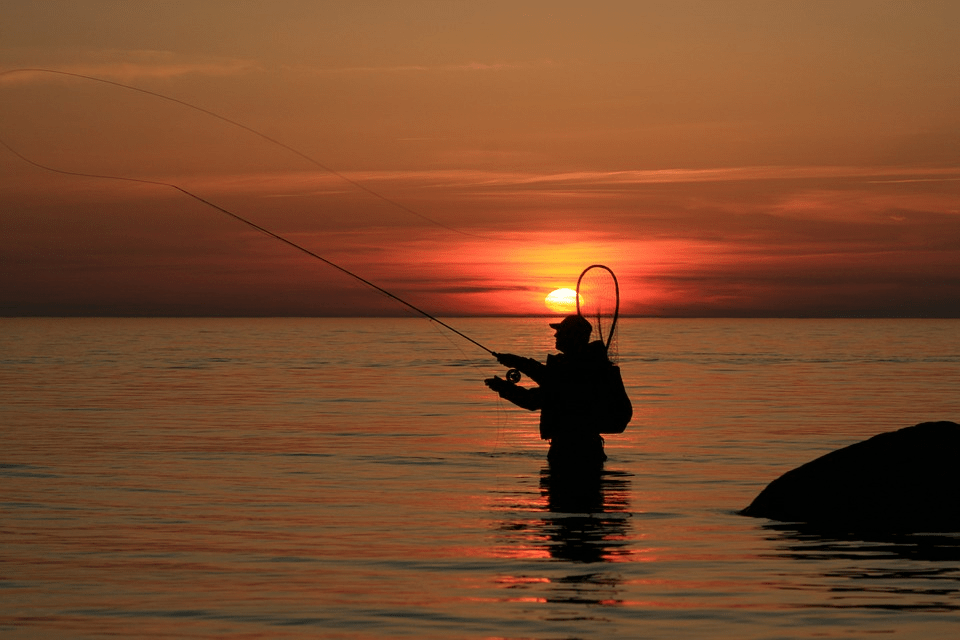Fly fishing is a very relaxing hobby for many people. It’s an intelligent form of fishing that also provides a good workout. You also get to be out in the beauty of nature and can admire your surroundings with every cast you make.
It’s not the same as traditional fishing. You need different equipment and you need to have a different mental discipline for fly fishing. It takes time and practice, but it’s something that you can master in no time at all.
There are many ways to learn fly fishing. You can study videos, read articles or just observe your friends and family members who have already taken up the sport. Whatever way you decide to learn, keep an open mind and have fun!
Here are a few fly-fishing basic safety tips and procedures to follow:
Fly fishing safety tips:
1. Always wear wading shoes or boots. You’re going to be standing in the water when you fly fish, so you might as well wear appropriate gear for the conditions. Add a wading belt to your shoes or wading boots so that they don’t fill up with water right away should you happen to slip or fall. If you are in unfamiliar waters, you might want to bring along a wading stick or a long tree branch. It can help you measure the depth of the water and prevent you from falling, especially if you’re fishing in rough waters or going through difficult terrain.
2. Dress for the conditions. If you are fishing in sunny conditions, wear plenty of sunscreen and have some insect spray handy. If you are fly fishing in wet conditions (rain, ice, snow, etc.), wear a poncho or rain coat and don’t stay out too long. Wear polarized sunglasses on bright sunny days to cut down on glare and to help you see the fish better in the water. Adding a hat works, too.
3. Pinch any barbed hooks. If you are using barbed hooks, make sure that you pinch the barbs first before you cast. They can be quite difficult to remove if they get stuck in your skin, a tree or other obstacles. Barbless hooks are easier to take out and are far less painful if they should get stuck in your skin.
Fly fishing procedures:
Once you’ve got your gear and found the perfect spot, it’s time to start fishing! Here are some tips for making the overhead cast, which is the first type of casting that you should master.
1. Hold your fishing rod with the thumb on top, pointed towards the end of the rod. Hold the fly securely between the rod and your index finger. This prevents any extra line from spooling out.
2. Point the rod slightly down from waist level. Pull out about 10-12 yards of fly line. Jiggle your fly rod up and down. This will feed your line down into the water right in front of you.
3. Take a couple of steps back, so that the line extends out in front of you. Step back carefully, and keep an eye out for rocks or other obstacles that could cause you to lose your balance.
4. Lift your arm that’s carrying the fly rod up slowly. Keep raising your arm until the line is tight. Keep your wrist exactly where it is.
5. Rotate your arm backwards quickly so that the line is behind you. This will cause the fly rod to bend. It’s also referred to as “loading the rod.” Your arm with the fly rod should be at about a 1 or 2 o’clock position. Pause until the line forms a loop behind you.
6. Bring your arm that’s holding the fly rod forward quickly to a 10 o’clock position. This will make the line cast forward out in front of you. The strength and direction of your cast will determine how far and what angle your line will go.
7. Lower the arm carrying the fly rod gently to lay the line out on the water. Do this gently. This prevents the line from hitting the water roughly, which can scare any fish away. The line should be tight.
8. Once you’ve gotten this to work, don’t be afraid to keep practicing. Work on things like stopping and starting your wrist action in a timely manner. You can also perfect your wrist motion so that you are putting the line in the same spot consistently every time.
These are just a few basics. You’ll want to bring along some extra lines and flies. You never know how well you’ll do on the lake! Pay attention to your surroundings as you cast, and always make sure that you are casting away from people or animals. After enough practice, you’ll soon be spending hours in peace and quiet fishing the old fashioned way.
